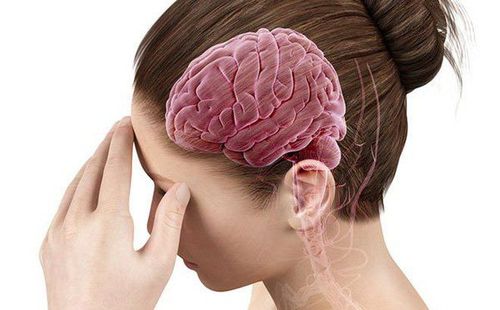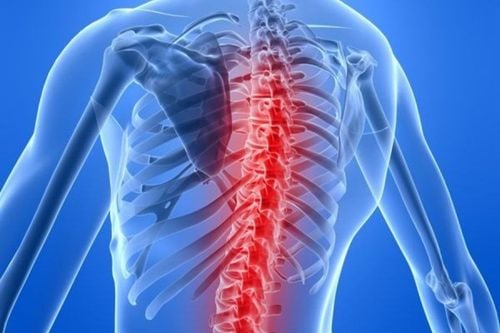This is an automatically translated article.
Our physiotherapist will take care of all your neck pain problems. Here is useful information about exercises, physical therapy for people with neck pain.
1. Neck pain: Causes, exercises, treatment and more
Neck pain, also known as cervical spondylitis, is discomfort and pain in the vertebrae. Neck pain can be due to a number of reasons, the most common being poor posture, there can be some medical reason behind neck pain as well, or it can also be due to some structural disorder in the neck, vertebrae. neck and discs (cervical disc herniation, neck pain syndrome), muscles, esophagus, larynx, trachea, blood vessels, lymphatic organs, nerves, thyroid and parathyroid glands ....
Mild neck pain can be treated with the help of some neck pain home remedies such as massage, rest and ice application, while severe forms of neck pain require medical attention. Medical...
Sometimes simple home interventions are enough to treat cervical disc pain, in which an abnormality in one or more discs located between the vertebrae causes neck pain. . Usually, however, patients should see a physical therapist who can treat abnormalities and teach them how to stretch and strengthen the cervical vertebrae, improve posture, and prevent neck pain. Occur again periodically. You may also consider seeing a chiropractor. For most people, some of the exercises and manipulations these health care providers use can help reduce discomfort and restore movement.
When visiting a physiotherapist or chiropractor, a full assessment will be performed first. Doctors will assess how well you can move your neck. They will also be asked about symptoms such as pain in the neck or between the shoulder blades, pain that radiates down the arm to the hand or fingers, or numbness or tingling in the shoulder and arm. Your strength, reflexes, and other potential sources of pain will also be checked. A therapist or chiropractor will also evaluate joint function in the person's neck and back to identify limitations or dysfunction that may be contributing to their pain.
There are several types of maneuvers and exercises that a physiotherapist or chiropractor can use to reduce stiffness, strengthen muscles, and restore normal neck function. Treatments such as cold or hot compresses, deep tissue massage, electrical stimulation, and ultrasound may be used before exercise.
During physical therapy, you will practice a series of exercises to stretch and strengthen the muscles that support your neck. They will also learn to improve posture and range of motion in the neck. To help the person learn proper postures, the physical therapist may ask them to stand in front of a mirror during exercise so they can see their mistakes and correct them.
Chiropractors use some of the same techniques as physical therapists. Gentle adjustments can help restore normal neck function and help relieve pain. As with physical therapy, chiropractors work with the neck and thoracic joints to reduce stiffness, improve mobility, and increase range of motion. These adjustments can be inappropriate and potentially risky for people with blood vessel problems in the neck, such as carotid stenosis or advanced osteoarthritis. A physiotherapist, chiropractor, or physician should determine if a person is at risk of further injury from manipulation before treating them.
2. 5 physiotherapy exercises for neck pain
Exercising, sports and even sitting at a desk all day can put pressure on the neck, leading to pain and discomfort. While some problems may require orthopedic surgery, non-invasive treatments are often preferred because they can provide better long-term outcomes and are often the first line of defense. against neck pain.
A qualified and certified physical therapist can help you create an appropriate plan for chronic neck pain – pain that lasts more than a few weeks. With a physical therapy plan tailored to your needs, you can safely gain strength and flexibility, and reduce your risk of developing a future neck injury. If you're experiencing neck pain and are still confused about pain relief options, your physical therapist may recommend some of the following exercises.

Ngồi làm việc cả ngày có thể gây áp lực cho cổ
2.1. Head roll and shoulder roll
These stretches are a good warm-up to start with before doing other exercises. For the shoulder roll, keep your arms relaxed at your sides with your head straight, just lift and roll your shoulders gently. Relax for a few seconds before proceeding to the next roll. Do ten times forward and ten times backwards.
For the head roll, first stretch the neck. Make sure that your shoulder blades are relaxed and that your head is not tilted forward but is directly over your neck. Start by bending down slowly so that your chin moves towards your chest and hold for a few breaths (in case you can't let your chin touch your neck or if this increases pain, stop and contact your doctor). physiotherapists). Next, raise your head and lower your left ear toward your left shoulder and hold. Repeat this move on the right side, then do the same move with your head back.
After stretching the neck, the patient can roll the head slowly in sections, from forward or backward on each side, five times each. Avoid rolling the entire head, which can actually increase pressure on the neck and make the pain worse.
2.2. Stretching movements of shoulder and neck muscles
This is a simple exercise and can even be done at our desks. For an upright sitting position, sit upright in a chair with your feet flat on the ground. Extend your right arm along the right and place your left hand on top of your head. Tilt your head to the left, pressing gently with your hands to increase the stretch. Hold for 30 seconds, then repeat for the right side. The patient will feel the muscles of the shoulder blades on both sides of the neck stretch and relax.
2.3. Push-ups facing the wall
This exercise can help strengthen the shoulders and support the neck muscles of the patient, without causing the pressure like normal push-ups. Stand facing a wall, about two to three meters in front, and feet shoulder width apart. Put your hands on the wall, just below your shoulders. Start with your arms straight and slowly bend your elbows to bring your body closer to the wall. Repeat this move 10 times for one or two turns.
2.4. Water aerobics exercises
Although high-impact sports can be difficult on the neck, low-impact sports such as swimming, walking or biking can help people avoid strain. For people with neck pain, many physical therapists recommend going to the pool to do aerobic exercises to increase blood flow to the neck. While in the water, they can try a flexible neck stretch like a "watch" exercise. Repeat the following steps for both sides:
Stand in a crouched position, arms at shoulder height. While right foot and hand forward at 12 o'clock, sweep left hand to 6 o'clock, followed by head and torso. Repeat five times. Keep the left hand swept to the 6 o'clock position, while the head only moves to the 9 o'clock position, for five repetitions.

Tập aerobic dưới nước để tăng lượng máu đến cổ
2.5. Shoulder muscle exercises
This exercise strengthens the muscles that pull the shoulder blades together. The practitioner will lie face down on a bed or similar surface, angled so that their face is at an angle and they can extend their arms away from each side. Looking up, bend your elbows and squeeze your shoulder blades together without moving your head. Try about 20 reps for one or two sets. You can also add a few light dumbbells to this exercise if you find it too easy.
Physical therapy exercises have been proven effective in the treatment of patients with chronic neck pain. While adding these exercises to their routine, patients should be careful to avoid exercises that could hinder their progress. Do not sit up or bend over as these movements can strain the cervical vertebrae. In weightlifting exercises, both push-ups and pull-downs put pressure on the vertebrae and should be avoided. If home physical therapy exercises don't relieve the pain or cause damage to another area, contact your doctor as soon as possible.
Please dial HOTLINE for more information or register for an appointment HERE. Download MyVinmec app to make appointments faster and to manage your bookings easily.
Reference sources: webmd.com, comportho.com













